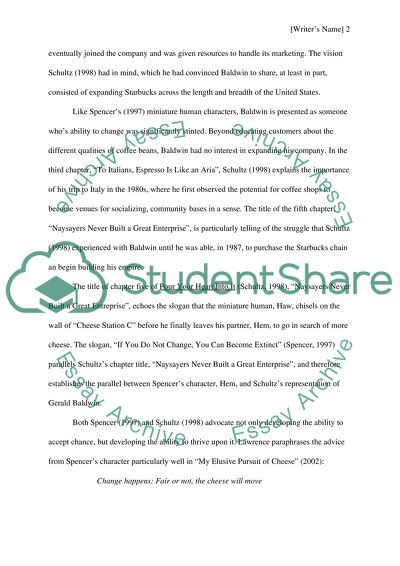Cite this document
(“The Connection Between Pour Your Heart Into It: How Starbucks Built a Essay”, n.d.)
The Connection Between Pour Your Heart Into It: How Starbucks Built a Essay. Retrieved from https://studentshare.org/miscellaneous/1517628-the-connection-between-pour-your-heart-into-it-how-starbucks-built-a-company-one-cup-at-a-time-and-who-moved-my-cheese
The Connection Between Pour Your Heart Into It: How Starbucks Built a Essay. Retrieved from https://studentshare.org/miscellaneous/1517628-the-connection-between-pour-your-heart-into-it-how-starbucks-built-a-company-one-cup-at-a-time-and-who-moved-my-cheese
(The Connection Between Pour Your Heart Into It: How Starbucks Built a Essay)
The Connection Between Pour Your Heart Into It: How Starbucks Built a Essay. https://studentshare.org/miscellaneous/1517628-the-connection-between-pour-your-heart-into-it-how-starbucks-built-a-company-one-cup-at-a-time-and-who-moved-my-cheese.
The Connection Between Pour Your Heart Into It: How Starbucks Built a Essay. https://studentshare.org/miscellaneous/1517628-the-connection-between-pour-your-heart-into-it-how-starbucks-built-a-company-one-cup-at-a-time-and-who-moved-my-cheese.
“The Connection Between Pour Your Heart Into It: How Starbucks Built a Essay”, n.d. https://studentshare.org/miscellaneous/1517628-the-connection-between-pour-your-heart-into-it-how-starbucks-built-a-company-one-cup-at-a-time-and-who-moved-my-cheese.


